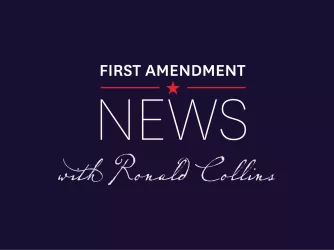Table of Contents
RIT Admins Limit Distribution of Magazine, Claiming Medical Illustrations Are Obscene

Rochester Institute of Technology (RIT) administrators restricted distribution of the student-run publication Reporter Magazine in late April, arguing that two drawings of genitals by a medical illustrator might subject the school to liability under obscenity laws. As the Reporter Editorial Board noted in an article last Wednesday, the drawings fall far short of the legal definition of obscenity. Further, prior review of the magazine by administrators runs counter to Reporter bylaws, which are approved by RIT’s president.
The illustrations were included in Reporter’s annual themed issue, which focused this year on gender and sexuality. According to the editorial board, Reporter staff hoped the issue would “instill interest in and stimulate conversation about historically underrepresented and taboo topics that affect RIT and the community at large.” Magazine staff planned to release the issue at Imagine RIT, a campus event meant to “showcase[ ] the innovative and creative spirit of RIT students, faculty and staff.” But those plans were curtailed:
[D]uring the printing process at RIT’s on-campus Printing Applications Laboratory (PAL), an individual objected to some of the content of the magazine and copied the file to members of the RIT administration. The file was eventually distributed to several Reporter Advisory Board members who reviewed the magazine without the consent of Reporter.
[...]
Alluding to New York State obscenity laws, the administration has decided to prevent Reporter from fully distributing at Imagine RIT. Until Monday May 5 the magazines will not be available on the campus-wide stands and may only be distributed from our booth in the Gordon Field House and only to individuals 18 years or older. These stipulations severely limit our distribution and consequently—intentionally or not— undermine the community that this issue aims to give voice to.
New York’s obscenity law tracks the standard set forth by the Supreme Court of the United States in Miller v. California, 413 U.S. 15 (1973). In Miller, the Court held that in order to regulate expression as “obscenity,” the material must satisfy each prong of a three-part test:
(a) whether "the average person, applying contemporary community standards" would find that the work, taken as a whole, appeals to the prurient interest; (b) whether the work depicts or describes, in a patently offensive way, sexual conduct specifically defined by the applicable state law; and (c) whether the work, taken as a whole, lacks serious literary, artistic, political, or scientific value.
Id. at 24 (internal citations omitted). A scientifically accurate drawing of genitals in a magazine issue dedicated to a discussion of sexuality obviously does not meet Miller’s test for obscenity.
RIT’s general counsel Bobby Colon also expressed a concern that the issue might create “potential legal liability for distributing indecent materials to minors.” But any complaints on that basis would be unsupported by the law. While the Supreme Court has ruled that a state may limit children’s access to materials that are obscene as to children, even though they may not be obscene for adults, statutes that restrict such materials still must have clear and adquately narrow boundaries, such as prongs that track the three Miller requirements. Materials that are obscene as to minors must still, for example, lack serious literary, artistic, political, or scientific value—a standard these illustrations fail to reach.
According to the Democrat & Chronicle, “RIT President Bill Destler ... is now allowing the magazine to be handed out at the Reporter's booth during the Imagine festival to those 18 and older. And the publication will be available elsewhere on campus on Monday.”
This isn’t the first time FIRE has seen a student publication censored for its frank and thorough discussions of sex, nor is it the first time we have seen people grossly misstate obscenity law in their calls for censorship. Nevertheless, such an unfounded justification is always disappointing—particularly because, as the Reporter staff noted, speech concerning gender and sexuality “been systematically suppressed by positions of authority throughout history.” As they write, “A journalistic publication highlighting gender and sexuality is not obscene. It’s educational, it’s informative and suppression of it is discriminatory.”
FIRE hopes to see RIT acknowledge its wrongdoing in this case and clarify to Reporter staff and the RIT community that it will not impose restrictions on student publications based on assertions that clash with common sense and First Amendment principles.
Recent Articles
FIRE’s award-winning Newsdesk covers the free speech news you need to stay informed.

VICTORY! Maine hospital backs down from defamation threat over teen’s criticism

Socratic free speech scholar Frederick Schauer dies at 78 — First Amendment News 446

FIRE reminds Michigan town that residents have the right to ‘concealed carry’ campaign literature in polling places
